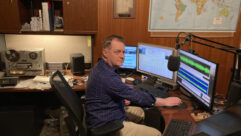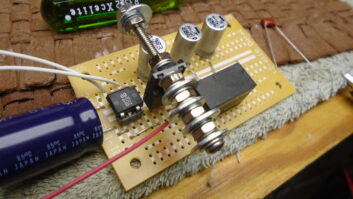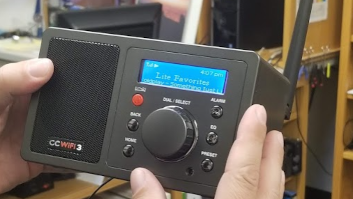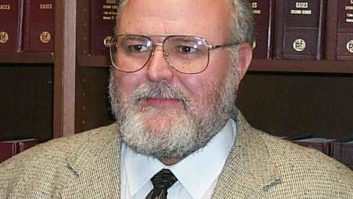The Society of Broadcast Engineers, in cooperation with several publishing firms, has been issuing specialty volumes for the broadcast engineering community for quite some time now. These generally have focused on specific, narrowly-defined portions of the radio or television origination and transmission chain.

“SBE Broadcast Engineering Handbook: Hands-On Guide to Station Design and Maintenance,” ISBN 978-0-07-182626-6,” is published by McGraw-Hill and edited by Jerry C. Whitaker. However, that has changed with the “SBE Broadcast Engineering Handbook: Hands-On Guide to Station Design and Maintenance.”Its 52 chapters and three appendices address just about every area in which the radio or television engineer is likely to need guidance or review.
The handbook was edited by Jerry Whitaker. He and more than 50 other experts in broadcast engineering have teamed up to make this possibly the best and most comprehensive work of its kind.
WHAT’S IN IT?
It covers such basics as safety, ADA considerations, AC power systems and project management, and includes specialized and cutting-edge technologies like bonded cellular transmission from the field, precision time protocol, IP transport and the ATSC 3.0 next-generation digital TV transmission system standard.
While a skim of the table of contents might lead one to think that the book is somewhat “television-heavy,” there’s plenty of meat on the radio side, with sections on AM and FM antenna systems and transmitters, studio soundproofing, EAS, disaster recovery, audio systems, AC power, remote broadcast technologies, cable management, intercom systems, FM channel combiners and just about everything you could possibly want to know about transmission lines. And while not many of us are involved in shortwave (HF) broadcasting, there’s a chapter on that topic that makes for interesting reading; it includes a section on ionospheric behavior affecting long-range transmission of radio signals.
I was particularly impressed with a chapter on grounding, authored by Whitaker himself. In coming up through the ranks, as I did, the topic of grounding always seemed to border somewhere on the “black arts,” with little explanation of why something was done in a particular way (if it was done at all). Whitaker’s 14-page “Facility Ground System” chapter sheds a lot of light and opened my eyes to some interesting points that I never picked up, even after a three-day course I took “way back when” that dealt more or less exclusively with grounding and bonding.
BUT WAIT, THERE’S MORE
With most books, it’s easy to ignore the appendices, which can be pretty dull; but don’t do that with this one.
There’s page after page of relevant and useful information. Whitaker has included such niceties as conversion data for almost any unit of measure you’ll ever encounter, tables delineating the various bands of the electromagnetic spectrum, information about standards organizations, a dB reference table, wire sizes and much, much more.
I know that I’ll be returning again and again to this part of the book, as it sure beats Googling or remembering which book in my library I can reference for such things as that chart equating standing wave ratios to return loss values, or what size U.S. drill bit I’ll need to make a hole for a 6 mm bolt.
This is not the sort of book that you’re going to plow through like a bestseller. However, I guarantee that once you open it and skim through some of the chapters, you’ll keep returning to it and digest section after section, as I did.
I just wish such a book had existed when I was coming up through the ranks. It answers many of the questions that I formulated as I got deeper and deeper into broadcast engineering and had no easy way to get answers.
WHAT’S THE CATCH?
Are there any negatives? This old curmudgeon does offer a few.
One is the page numbering. It doesn’t run consecutively from one to “n” (or in this case, one to 912), but rather starts anew with each chapter (1.1 to 1.35, 6.1 to 6.24, etc.). I found this awkward but gradually got used to it as I became more familiar with the book. (No, I didn’t take the time to count the pages to arrive at the 912 number; the book’s editor provided me with the total.)
Another slight “gripe” concerns the size of the type used. It’s on the small side, and as my eyes aren’t what they used to be, it’s a bit difficult to read the excellent material presented without putting my “cheaters” on. However, that’s just me; younger eyes may not have this problem.
Last, some might find the nearly $200 retail price point somewhat daunting, but when you do the math, this works out to less than a nickel per page — a real bargain for a hardback technical volume these days, and certainly a lot less than the price of admission to any technical training class that I ever attended. SBE members pay $159; see the SBE Store section of www.sbe.org. I also checked the Amazon website and the book can be had there for $165 and change; there’s a Kindle edition going for less.
If you’re serious about moving ahead in the technical side of broadcasting, you need this book.
James O’Neal is a retired broadcast engineer who worked in the field for some 37 years before joining Radio World’s sister publication TV Technology, where he served as technology editor for nearly a decade. He is a regular contributor to both publications and a number of others.












